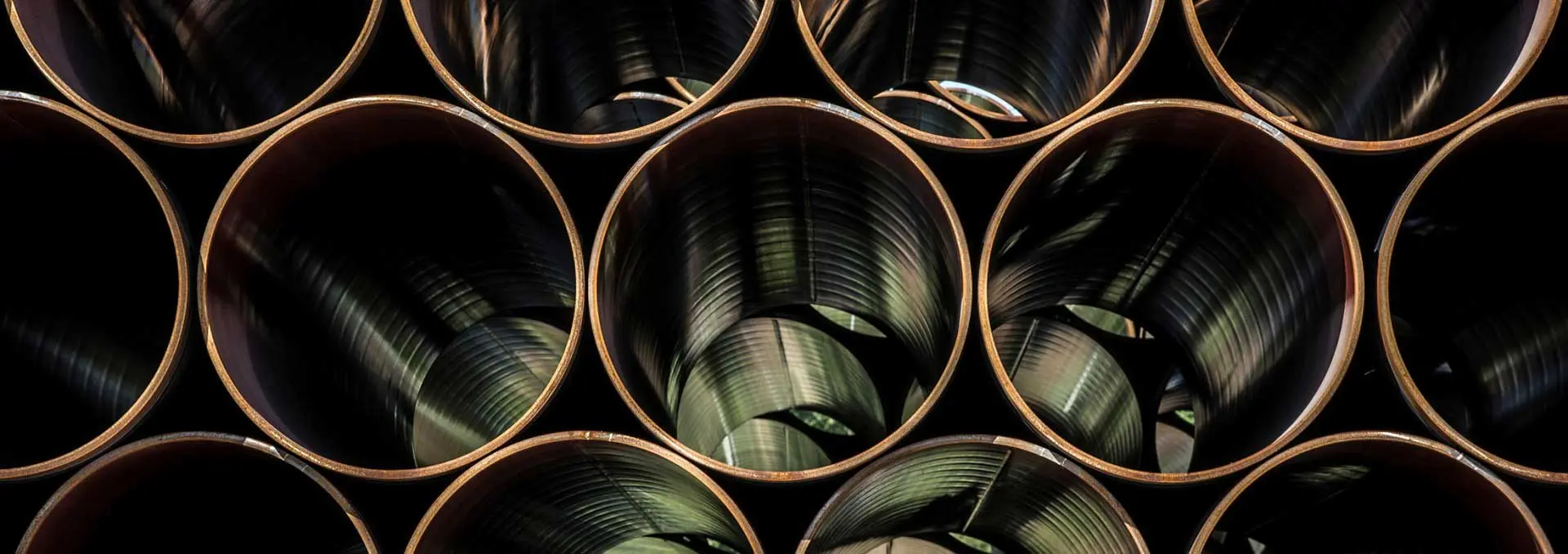APPLICATION AND USAGE OF ASTM A53 PIPING
ASTM A53 Pipes for Oil & Gas
ASTM A53 pipes are utilized in a variety of applications, including commodities processing, maritime applications, and oil and gas transportation of gas and liquid. Our clients often request anti-corrosive coating for pipes used to carry oil, gasoline, and propane, and we are happy to provide.
ASTM A53 pipes, which are usually constructed of carbon steel or low alloy steel, are less costly to manufacture than tubing in most cases. In order to determine how much product can flow through the pipe, the interior diameter of the pipe is the most important measurement. Pressure rating, yield strength, and ductility are all important characteristics to consider.
ASTM A53 Pipes for Structural Steel
A wide range of diameters and grades are available, allowing ASTM A53 pipe to be utilized in a variety of different structural applications as well as for a variety of various structural functions. Columns, bollards, sign poles, structural supports, and piling are just a few of the applications for a structural pipe that are common.
ASTM A53 Pipes for Metallic Conduit
ASTM A53 metallic conduit pipes are durable steel-based enclosures that are used to route individual electrical wiring conductors throughout a building or structure while protecting the wires from impact, moisture, and chemical vapors. Conduit pipes and electrical metallic tubing (EMT) are also known as EMT.
Conduit pipes are categorized based on the thickness of the walls, the mechanical stiffness of the joints, and the material utilized. Conduit pipes are made of galvanized steel tubes with a wall thickness sufficient to enable them to be threaded. Galvanized rigid conduit pipes (GRC) are a kind of rigid conduit that is threaded. Intermediate metal conduit pipe (IMC) is a lighter-weight, thinner variant of rigid metal conduit (RMC).
The ASTM A53 tubes are hot-dipped galvanized and then blown dry to avoid zinc buildup on the inside of the tubes. On the outside, a clear lacquer is applied to provide a long shelf life. The excellent ductility of the conduit allows for simple bending, threading, and cutting operations.
ASTM A53 Pipes for Conveyor Roller
ASTM A53 conveyor roller pipes are able to be machined and processed into conveyor rollers. Conveyor roller pipes are components of a conveyor belt that are used to transport products or loose bulk materials such as coal, sand, or iron ore. Conveyor roller pipes are an integral feature of this system and are required for conveyance to be possible.
The conveyor belt transports the goods as it loops around the pulleys and roller pipes. The conveyor pulleys are responsible for driving the belt, maintaining tension on it, and guiding it in the desired direction. More information regarding the purpose and operation of conveyor pulleys may be found in our blog post on the subject. Conveyor roller pipes are responsible for transporting the conveyor belt from one drum to another. They are just used to provide support for the belt.

 English
English Español
Español




 Tel : +86-18565811709
Tel : +86-18565811709 Email :
Email : 





